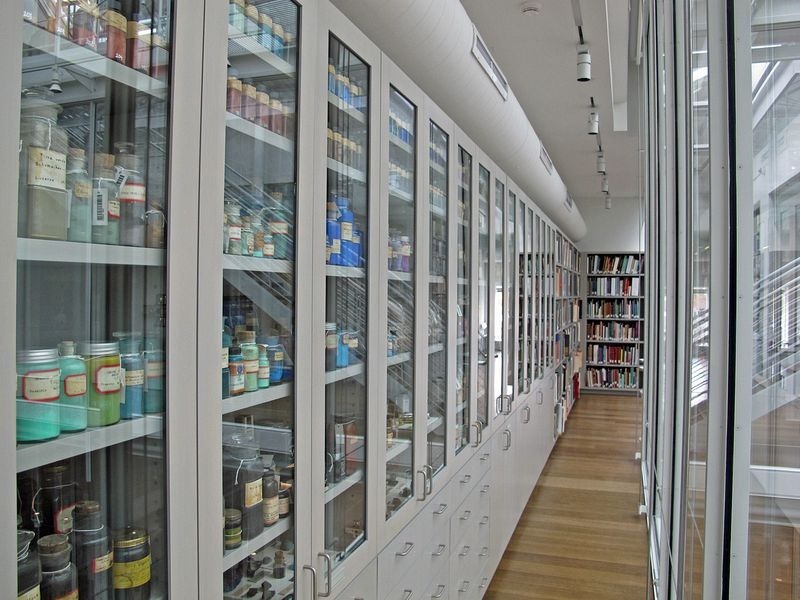A slice of rare lapis lazuli rock from quarries inwards Transitional Islamic State of Afghanistan , secretions from on ocean-dwelling snail Bolinus brandaris , dried bodies of tiny insects Coccus ilicis , and a ball of “Indian yellow” made from the urine of cows fed solely on mango leaves , are only exactly about of the bizarre treasures housed inwards the long row of cabinets inwards the Harvard Art Museums’ Straus Center for Conservation together with Technical Studies. This remarkable materials collection , only about of which appointment dorsum to a greater extent than than a hundred years together with come upward from all over the globe , represents raw materials from which pigments , dyes together with binding media were traditionally made earlier synthetic pigments became available.
The famed Forbes Pigment Library was compiled past times Edward W. Forbes , quondam managing director of Fogg Art Museum , betwixt most 1910 together with 1944. Forbes’ involvement inwards pigments together with its preservation started amongst his buy of the 14-century Madonna together with Child amongst Saints , which he bought inwards 1899 during a trip to Italy. Forbes noticed that the icon , equally amongst all early on Italian paintings inwards his collection , was apace deteriorating which urged him to commence a passionate exploration into the procedure of how paintings were made. That passion led to his collection of materials related to the making together with restoration of art.
By the goal of the 1920s , Forbes had amassed a huge collection of pigments which he had acquired from his travels to Europe together with the Far East. While inwards Bharat , he collected “Indian yellow” which was used for centuries , but stopped beingness made because the procedure was harmful to cows. From Transitional Islamic State of Afghanistan he acquired the precious lapis lazuli rock which inwards Medieval times was said to go half-dozen times to a greater extent than valuable than gold. He also brought amongst him nuggets of creative mortal pigments discovered inwards the earthworks of Pompeii.
When Forbes founded the Center for Conservation together with Technical Studies inwards 1928 , he had over 1 ,000 pigments inwards his collection. Today , it has over 2 ,500 samples together with is renowned inwards the fine art community. In improver to offering a phenomenal display of color together with a glimpse into the history of pigments , these pigments also assist experts to question , authenticate together with restore paintings.
Prior to the renovation together with expansion of the museums , the mass of these materials had been stored away from populace view. They are similar a shot displayed at Harvard Art Museums inwards rows of drinking glass cabinets amongst their contents stored inwards their master frail drinking glass containers.

A rich bluish hue prepared past times grounding the precious lapis lazuli rock mined from quarries inwards Afghanistan
Another expensive pigment known equally Tyrian violet is prepared from the secretion from the predatory sea snail Bolinus brandaris (originally known equally Murex brandaris). Its high toll rendered it a condition symbol , together with Byzantine emperors forbade anyone exterior the royal courtroom from using the violet dye , lending it the distinction “royal purple.”
The role of tiny metallic element flakes suspended inwards a binding medium tin give artworks a shining finish.
Artists oft took risks to exercise their plant , using poisonous pigments similar emerald dark-green to instruct the color only right.
The red-orange realgar is derived from arsenic sulfide minerals.
There are samples of kermes , an Old World pigment created past times grinding tiny blisters produced past times the insects Coccus ilicis , which lived on the kermes oak tree. Kermes is also the source of the give-and-take “crimson.”
Sources: Harvard Art Museum / Harvard Gazette











